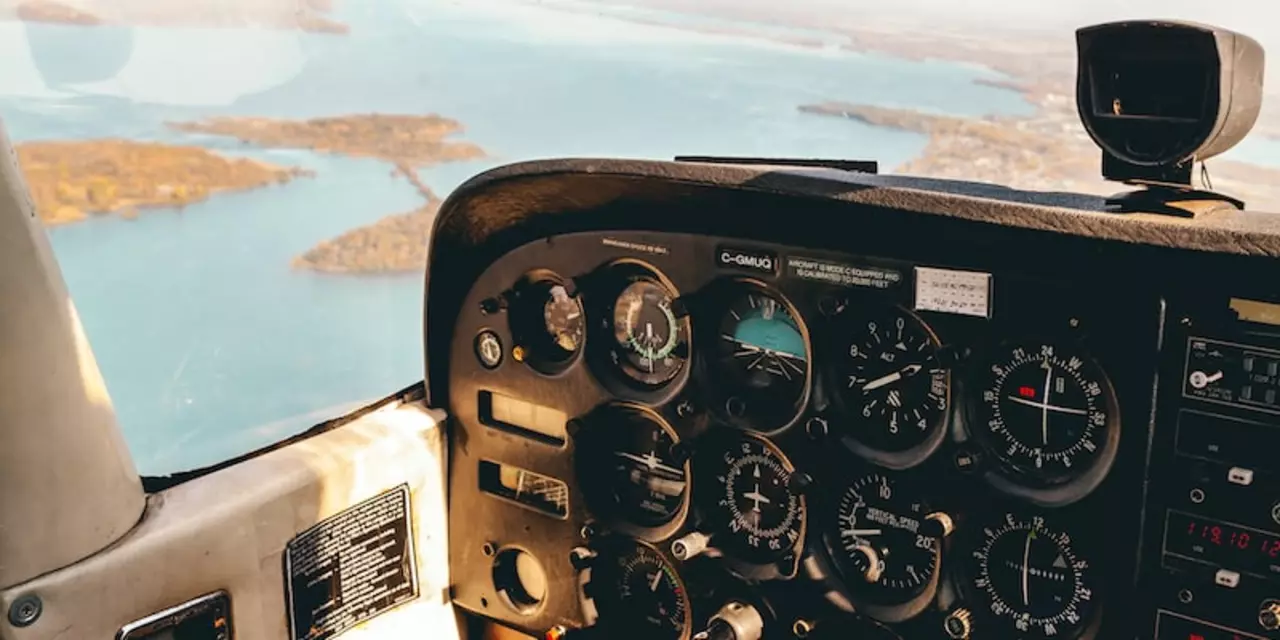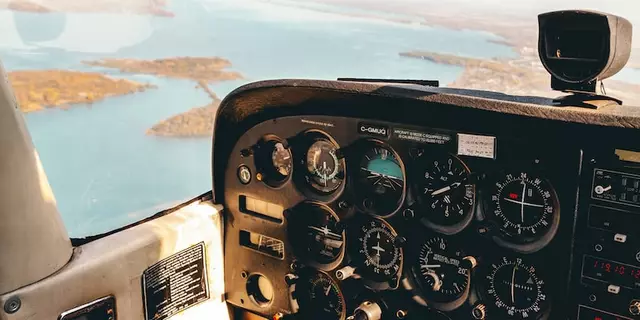
Uncovering the Causes of Mid-Air Collisions on Clear Days
Mid-air collisions are one of the most dangerous aviation accidents and can have catastrophic consequences. Unfortunately, most mid-air collisions occur during seemingly clear days, when the weather is not thought to be a contributing factor. But why do most mid-air collisions happen during clear days?To better understand why this phenomenon occurs, it is important to understand the common causes of mid-air collisions. A mid-air collision can occur due to a variety of factors, including poor visibility, pilot error, or a lack of communication between aircraft. In addition, aircraft may be flying too close together, or a pilot may not be aware of the other aircraft's position.
When it comes to the issue of mid-air collisions on clear days, the primary cause is often attributed to pilot error. While clear days often provide good visibility, they can also lead to complacency among pilots. Without clouds or other weather-related hazards, some pilots may be less vigilant about maintaining awareness of their surroundings. This can lead to a lack of communication between aircraft, or a failure to spot other aircraft in the vicinity.
In addition, clear days can also lead to an increase in air traffic. With no weather-related issues to slow down air traffic, aircraft can be flying closer together than usual, increasing the chances of a mid-air collision.
Ultimately, mid-air collisions on clear days are typically due to pilot error, a lack of communication, or an increase in air traffic. While clear days can offer good visibility, they can also lead to complacency among pilots, which can increase the risk of a mid-air collision. As such, it is important for pilots to remain vigilant and aware of their surroundings, even when the weather is clear.
Examining the Factors that Lead to Mid-Air Collisions on Clear Days
Most mid-air collisions occur on clear, sunny days, and this is often attributed to pilots being more relaxed and complacent when the weather is good. But there is more to it than that. There are a number of factors that can contribute to mid-air collisions on clear days, and understanding them can help us to prevent such accidents in the future.The first factor is visibility. On days with poor visibility, such as fog, rain, or snow, pilots are more likely to take extra precautions, such as avoiding certain types of flight paths and increasing the distance between aircraft. However, on clear days, pilots may be more relaxed and not take these precautions, resulting in a higher risk for mid-air collisions.
Another factor is the number of aircraft in the air. On clear days, many pilots take advantage of the good weather and will be flying, resulting in a greater number of aircraft in the same airspace. This increases the likelihood of two aircraft coming into close proximity with one another, leading to a mid-air collision.
Finally, the type of aircraft can play a role in mid-air collisions. Small aircraft, such as gliders and ultralight planes, can be difficult to spot, especially on days with clear skies. On these days, pilots may not be as vigilant in looking out for smaller aircraft, which can increase the risk of a mid-air collision.
By understanding these factors, we can take steps to reduce the risk of mid-air collisions on clear days. Pilots should always remain vigilant and aware of their surroundings, regardless of the weather. Additionally, pilots should increase their distance between aircraft on days with good visibility and be aware of the number of aircraft in the area. Finally, pilots should be especially aware of small aircraft, and take steps to avoid them if possible. By taking these precautions, we can reduce the risk of mid-air collisions on clear days.
The Dangers of Mid-Air Collisions on Clear Days
It may come as a surprise to many people, but most mid-air collisions happen during clear days. These types of accidents are especially dangerous because the pilots have good visibility, but can still fail to spot other aircraft in their vicinity. These accidents are usually caused by a lack of awareness, communication, and coordination between pilots.The most common mid-air collision scenarios occur when two aircraft fly in the same area without properly communicating their positions. This can happen in controlled or uncontrolled airspaces, but is more likely to happen in uncontrolled airspace due to the lack of air traffic control. In these scenarios, the pilots have a responsibility to visually detect and avoid other aircraft in the area. If one or both of the pilots fail to do this, a mid-air collision can occur.
Pilots should always be aware of their surroundings and take the necessary precautions to avoid a mid-air collision. This includes scanning the skies regularly while in flight, monitoring other aircraft’s positions, and proactively communicating with other pilots in the area. It is also important to remember that even in clear skies, aircraft can still be blocked from view by clouds, mountains, or other obstructions. This is why it is so important to stay vigilant while in the air.
Mid-air collisions are a very real danger, and it is important to stay vigilant while in the air. Clear skies can often create a false sense of security, so pilots should always be aware of their surroundings and take the necessary precautions to avoid a mid-air collision. By understanding the risks and taking the necessary steps to prevent a mid-air collision, pilots can help ensure their safety and the safety of other pilots in the sky.
Strategies for Avoiding Mid-Air Collisions on Clear Days
Mid-air collisions are one of the most dangerous and frightening aviation accidents that can occur, and the majority of them happen during clear days. While there are many potential causes of mid-air collisions, the most common factor is reduced visibility due to the clear sky. As a result, it is important to take extra precautions when flying on clear days to avoid any potential mid-air collisions.Here are some strategies for avoiding mid-air collisions on clear days:
1. Be aware of other aircraft. The best way to avoid any potential mid-air collision is to be aware of the other aircraft in the area. Make sure to check for other aircraft before taking off and remain vigilant while in the air.
2. Monitor air traffic control. Air traffic control is responsible for ensuring the safety of all aircraft in the area. Make sure to follow their instructions and remain within designated airspaces.
3. Follow the rules of visual flight. Visual flight rules (VFR) are important to adhere to on clear days. This includes remaining at altitudes that are clearly visible to other aircraft, maintaining a constant speed, and staying within class C and B airspace.
4. Avoid flying in congested areas. In cases where there is a high-density of aircraft in the same area, the risk of mid-air collisions is significantly higher. To avoid any potential accidents, it is best to avoid flying in congested areas and seek out less populated routes.
5. Utilize collision-avoidance technology. The most effective way to avoid a mid-air collision is to use collision-avoidance technology. This includes using aircraft transponders, ADS-B systems, and TCAS systems.
By following these strategies, pilots can minimize the risk of mid-air collisions on clear days. It is important to remain vigilant and aware of the other aircraft in the area to ensure the safety of everyone in the sky.
The Impact of Clear Days on Mid-Air Collisions
When it comes to mid-air collisions, most people assume that they happen during cloudy days, when visibility is limited and pilots can’t see each other. However, the opposite is true. Most mid-air collisions actually occur during clear days. This is because of the increased number of aircrafts in the sky, as well as the pilots’ failure to anticipate other aircrafts’ movements.When the skies are clear, there are often more aircrafts in the air. With more aircrafts, there is a greater risk of two aircrafts coming into close contact with each other. On top of that, pilots may be more likely to make mistakes when there is better visibility. When visibility is low due to cloud cover, pilots are used to relying on their instruments and taking extra precautions. On clear days, pilots may become less vigilant and more likely to make mistakes.
Furthermore, when there is no cloud cover, it can be difficult for pilots to determine the distance between their aircraft and other aircrafts. Without clouds to act as a reference point, pilots may misjudge the distance between their aircraft and others’. When this happens, mid-air collisions can occur.
In order to reduce the risk of mid-air collisions, pilots must be aware of the risks associated with clear days. They should maintain a heightened level of awareness and caution when there is no cloud cover, and they should always be aware of other aircrafts in the area. Additionally, pilots should take extra precautions when flying in areas with high traffic. By following these steps, pilots can help to reduce the risk of mid-air collisions.










Write a comment